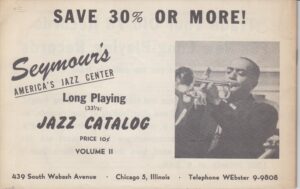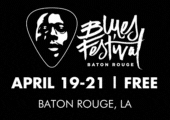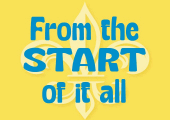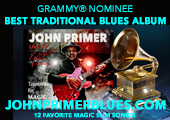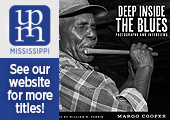Included in this Extra Edition are images and remembrances that we didn’t have room for in LB #274.
It was Delmark’s first LP by Big Joe Williams that caught my attention. I was by chance able to record my second Arhoolie release, LP 1002, by this incredible blues singer in the fall of 1960 in my cabin in Los Gatos, California! I probably first met Bob in person in 1964 when I was hired to accompany Lightnin’ Hopkins on the American Folk Blues Festival tour of Europe while Bob was on that tour with Sleepy John Estes and Hammie Nixon. After that, Bob was always a most gracious host when I visited Chicago, and took and guided me to the best blues clubs. His love for blues and all types of jazz was remarkable and his store was able to do well since his audience was solely focused on those two genres which had gained a large worldwide audience. A great human being and devoted record man! RIP!
—Chris Strachwitz (Arhoolie Records and Down Home Music)
I first “met” Bob (via US Mail—I regret never meeting him in person but we got to know each other well via mail and phone calls over a 50-year time span) in 1962 when I, as a 14-year-old piano blues enthusiast in the making, bought a copy of The Dirty Dozens by Speckled Red (Rufus Perryman) from [then] Delmar Records. I was familiar with Speckled Red’s 1930s recordings and I had gotten to know his younger brother Piano Red (Willie Perryman) during breaks at dances he performed for in Birmingham, Alabama.
I began selling traditional blues and jazz records by mail through my fledgling magazine, Music Memories, and for about a six-year period I bought a lot of LPs from Bob and he, in turn, bought many copies of the first blues LP I issued, Barrelhouse Blues and Jook Piano by the late Robert McCoy on my (then) Vulcan label.
Business—and the friendship—increased when my magazine merged with the Jazz Report magazine Bob had started earlier. I recall Bob being very pleasant to work with and maybe that’s because I was just a kid. Once, in lieu of a small debt I owed to Delmark (for some reason he and I both added a “k” to our record label names—mine, because of a trademark issue, had become “Vulkan” instead of “Vulcan”), I sent him (with Bob’s okay, of course) a field tape I’d made of a great Birmingham bottleneck guitarist and singer named Charley Barker.
Forty years later, when Bob reissued my original LP by Robert McCoy, I asked him whatever happened to the really good tape by Charley Barker. Bob laughed, saying he vaguely remembered it and promised me, “It’s still gotta be in the building somewhere!”
And thinking back on that reissue, I remember Bob and me going back and forth several times by phone and by mail on the subject of the liner notes he asked me to write. If I recall correctly, Bob had a very specific word limit in mind—maybe 1,500 words?—and I just wasn’t able to get the number down to lower than, say, 1,700 words. Bob insisted I keep editing but I finally asked him if he could possibly live with my 1,700 words if I gave up the usual liner note fee ($100?). He readily agreed. I still read those liner notes maybe once a year and am still very proud of them (although one reviewer said they were “akin to a suicide note!”). Thanks, Bob, for publishing them as written. :-}
Meanwhile, a blues enthusiast friend in Belgium or Germany (and I’ve forgotten his name) bought the rights to and the original studio tapes of Robert McCoy’s second album on my label with the promise that he would see those reissued at some point, probably through Delmark. A year or so later, I called Bob to ask him about it and he told me that it was too soon to issue another CD by Robert but that he had talked to my friend (who may have even sent Bob the tapes) and told him that those tapes would have to be on the “back burner” for now. So now I wonder if they, too, aren’t “in the building somewhere.”
I hope so. And I hope Bob’s spirit is also “in the building somewhere”—watching over Delmark and watching over the Charley Barker and Robert McCoy tapes and hoping—along with me—that they’ll soon make their way to the “front burner.”
—Patrick Cather
I first met Bob when my brother John was working for JRM. He was a mentor to so many. I remember all of the knowledgeable people that worked at the store as apprentices. And Bob ruled that roost with his crew . . . strict, but willing to impart his vast wisdom. Whether it was his immense knowledge of the film world or befriending Big Joe Williams, he showed his multiple personalities . . . from his sometimes-rough exterior to a behind-the-scenes heart of goodwill. And, when he released our Magic Sam Live at Ann Arbor, he agreed to pay Sam’s widow all of the advance money we declined. And Bob never forgot his allegiance to St. Louis and Chicago jazz, particularly the early years of the avant-garde.
—Jim Fishel
Bob and Sue Koester created sweet home Chicago for Steve Tomashefsky and me.
Because we loved the blues, we moved to Chicago in December 1972. We knew hardly anyone; had no jobs, nor a place to live. We had absolutely no idea what was in store for us. But, then, Steve got lucky; Bob hired him. Then, just a couple weeks later, at the end of that January, we both got lucky: we were celebrating my birthday at Theresa’s with Bob and Sue (and Junior Wells). Talk about a sweet home!
For the next decade, almost every Saturday night, we were part of the “Blues Amalgamated,” a group of blues-loving friends at whose center were Bob and Sue. Thanks to Bob’s Chicago-home-making, Steve and I heard pretty much all of the Chicago-Mississippi blues greats of that era. (As Steve summed it up in the liner notes to Junior Wells—Live at Theresa’s, an album he and Bob produced together: “Man, you should’ve been there.”)
Here’s that list: Junior Wells, Howlin’ Wolf, Muddy Waters, Big Joe Williams, James Cotton, Pinetop Perkins, Little Milton, Tyrone Davis, Denise LaSalle, Otis Clay, Syl and Jimmy Johnson, Bobby Rush, Pops, Mavis, and the Staple Singers, Jimmy Dawkins, Sunnyland Slim, Fenton Robinson, Jimmy Reed, Hound Dog Taylor and the Houserockers, Robert Jr. Lockwood, Willie Dixon, Carey Bell, Hubert Sumlin, Eddie Shaw, Honeyboy Edwards, Blind John Davis, John Littlejohn, the Aces, Eddie Taylor, Magic Slim and the Teardrops, Johnny Christian, Matt Murphy, Cicero Blake, Big Walter Horton, Lefty Dizz, Johnny Dollar, Byther Smith, Big Moose Walker, Artie “Blues Boy” White, Otis Rush, Buddy Guy, Bobby “Blue” Bland, Roosevelt Sykes, and Little Brother Montgomery.
These musicians, along with dozens of others less well-known, were just out our proverbial doorstep—because Bob created the path down that step and across town for us, the rest of the Blues Amalgamated, and millions of other blues lovers around the world. Lest you ever doubted Bob’s gift to the world; never doubt.
While Steve and I have been fortunate to make many dear friends over the decades of our life together, Bob and Sue are in a group unto themselves. They completely unselfishly rooted us in an experience of theirs we too wanted, an experience that remains 50 years later among the most formative of our entire lives. Today, a half century after our move to Chicago, over a half century since hearing my first Delmark artist on record—and live (the latter would be Luther Allison in 1970), I continue to treasure Bob’s gift to the world: to constantly remind us that people from vastly different backgrounds can come together in a common artistic experience that both creates shared joy and leads to greater understanding and respect for one another.
Thank you, Bob.
—Rebecca Sive
When I was a 13-year-old kid in the Chicago suburbs, I became aware of blues, and suddenly needed to know everything there was to know. So, at 14, I got on the El train from my hometown of Wilmette bound for the corner of West Grand Avenue and North State Street, which was the original Jazz Record Mart location. Bob could usually be found behind the counter. And he took hours over the years to answer my ceaseless barrage of questions—about blues artists, blues bars (which I was too young to enter legally), record labels, record distribution, record collecting. I was 14 and he was (by my math) 47. But we had a sort-of friendship. He encouraged me to publish my early ’70s blues fanzine, Blue Flame. He was a very different kind of adult from my classical music parents.
And, of course, I always bought lots of records: LPs, 45s, and 78s. There was a 25-cent Prestige jazz 78 r.p.m. bin which one day became a 39-cent Prestige 78 bin. Inflation was a bitch!
I even suggested the title for Magic Sam’s second album: Black Magic. Bob informed me that Living Blues cofounder Jim O’Neal had already chimed in with that title idea as well. And so it was.
Over the years, I went to the Jazz Record Mart about one Saturday per month. While there, I met Moondog (in full Viking regalia), Big Joe Williams, Sunnyland Slim, Jimmy Dawkins, Carey Bell, Wild Child Butler, and a fiery young Lawrence University graduate named Bruce Iglauer, who went on to launch Alligator Records. In conversations with all of them, you could say I learned a bit about life. More than once, Bob introduced me as Carey Bell instead of Cary Baker. I was actually quite honored and amused.
I had lost contact with Bob around the time I left Chicago for college in rural Illinois in 1973, and certainly by the time I left for California in 1984. The last time I saw him was at a Blues Foundation function at B.B. King’s Blues Club in Universal City, California.
A few years ago, he wisely sold Delmark to two great younger music freaks, Julia A. Miller and Elbio Barilari, both of whom I like a lot, and who are finding some 21st century solutions for keeping the Delmark tradition relevant and accessible (like the Jimmy Johnson livestreams every Saturday). I doubt letting go was easy for Bob.
I will be forever grateful to Bob Koester, not only for his life’s work, but for not writing off this suburban teenager. It meant a lot. In fact, it meant everything.
—Cary Baker
When the Jazz Record Mart was on 7 West Grand, Bob had a turntable that had a sticker on it that said “Mean Mistreater.” At that time, all of the LPs in the store were open, and if you wanted to listen to anything before you bought it, Bob would play it for you.
I first went to the JRM in 1972. I had a heavy winter coat on, and Bob kept asking me to hang it up. When I got to the counter with my purchases, he looked at me and apologized for bugging me about my coat. Bob said I looked just like the guy who stole his whole Miles Davis collection from the store. When I told that to Bob many years later, he told me that I still looked like the guy who ripped him off.
On another occasion years later at the JRM, some customers were talking about a Republican politician involved in a sex scandal. Bob overheard the conversation and chimed in . . . “I didn’t know Republican’s even had sex!!!” Another time, a customer was asking Bob about a Frank Sinatra box set. Bob found the box set for the guy and then asked me if I liked Sinatra. I replied that I liked a few of Sinatra’s songs, but that I liked Dean Martin a lot better. Bob asked me if I knew who influenced Dean’s vocal style. I said that I thought it was Bing Crosby. Bob said that Harry Mills from the Mills Brothers was also a big influence on Dean Martin.
I asked Bob if he ever saw the guitar player Willie Lacey who had recorded on some Bluebird sessions. Bob said that one time he was talking to bass player Ransom Knowling and he told Ransom that he really didn’t like Willie Lacey’s guitar playing. Apparently, Willie Lacey was standing right behind Ransom. Ransom said, “Bob . . . this is Willie Lacey. Willie . . . I’d like you to meet Bob Koester!” Bob said, “That’s not the first or the last time I put my foot in my mouth!”
I was at Bob’s Blues and Jazz Mart a year or two ago, and a guy came in looking for used rock LPs. Bob pointed out where if he had any, they would be. The guy came to the cash register with one LP. He told Bob, “I saw FOGHAT last night!” Bob said, “Really?? How’s he doing?”
—Illinois Slim
In recent years, one of my favorite activities was to visit my friend and music mentor Bob Koester during his Saturday afternoon shift at his Jazz Record Mart. Over the years, he introduced me to the recordings of many blues, R&B, and jazz artists. I find it interesting that Bob was perhaps more fascinated with record labels and their histories than he was with the artists themselves. In addition to music, another thing that Bob and I shared in common is that we both had polio—and both walk with a limp. If you were to hold a walking race between the two of us, there would be no winner—simply two losers . . .
One weekend, we went for lunch in the immediate neighborhood and on the way back from lunch a rather weird thing happened. As we ambled around the corner of State and Illinois, we passed a middle-aged Black man, who seemed to be living on the streets. He was sitting on the sidewalk surrounded by a platoon of plastic bags and a boombox. As we passed, the guy shouted out, “Bob Koester!” And he stood up and gave Bob this big hug! In the midst of this unexpected embrace from a total stranger, Bob, who was sort of sheepishly bemused and at a loss for words, introduced me to his new friend. “Hey, whoever you are, I want you to meet Steve Cushing.” And before Bob could finish the introduction, our new friend yelled out, “Blues Before Sunrise!” and came over to shake my hand. “Man, I’ve been listening for years!” What made it even more surreal was that as all this took place we were surrounded by a crowd of young Black people, high school–aged kids, waiting at a bus stop. They were all sort of amused and fascinated. It turns out that the two fat, beat-to-shit, limping white guys are minor celebs—and the only guy who recognizes them is a middle-aged Black man living on the street. I think half the kids were looking around for the camera—sure that the whole situation was a prank.
—Steve Cushing
[Ed. Note: Steve Cushing, longtime radio host of Blues Before Sunrise, interviewed Bob Koester during Delmark’s 50th anniversary on May 25, 2003. He rebroadcast this interview in 2021 just weeks before Koester’s death. See http://www.bluesbeforesunrise.com.]
I was a steady customer of the Jazz Record Mart from late 1984 to the bitter end in 2018, and that’s not counting when my father used to take me there as a kid. My father wasn’t a musician, but he was a major fan of blues and country. He even snuck me in to a few blues gigs when I was a teenager. My earliest recollections of Delmark Records was that my dad played Roosevelt Sykes’ Hard Drivin’ Blues pretty often!
Once, while I was shopping at the Jazz Record Mart, Bob Koester was right there on the floor, filing away a stack of CDs. At some point, a Swamp Dogg disc comes up in the pile. Koester was mystified. Was he wondering whether to file him under “S” or “D”? Does he go under blues or soul? Was he stumped because he’d never heard of him before? No—he was baffled by the man’s name. “Swamp Dogg? What kind of name is that?” he wondered aloud. Koester owned a record label that gave us musicians with colorful names like Magic Sam, Sleepy John Estes, and the Big Doo-Wopper. In addition, the blues world is littered with even weirder nicknames than that. You’d think Koester would have been used to names like this, but it’s never too late. If you hung around the JRM for long periods of time, it was not uncommon to get a peek into Koester’s world, and it was pretty amusing.
—James Porter
Images courtesy Jim O’Neal
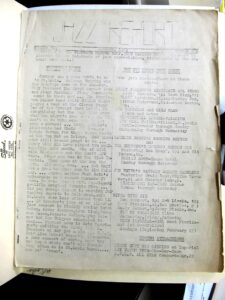
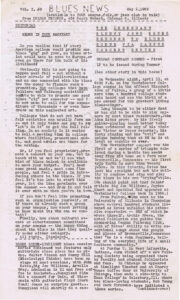

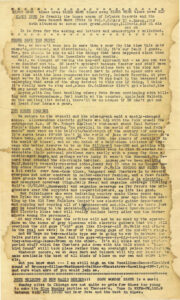

Image courtesy John Fishel
Seymour’s Jazz Center ephemera
Billboard 1959-03-23 p4 Koester buys Seymour’s Seymour started Heartbeat label (PDF)
Chicago Tribune 1953-4-6 ad Jazz Records Seymour’s Record Mart (PDF)
Down Beat 1959-06-11 Seymour’s Record Mart ad Koester prop Joe Segal modern jazz (PDF)


